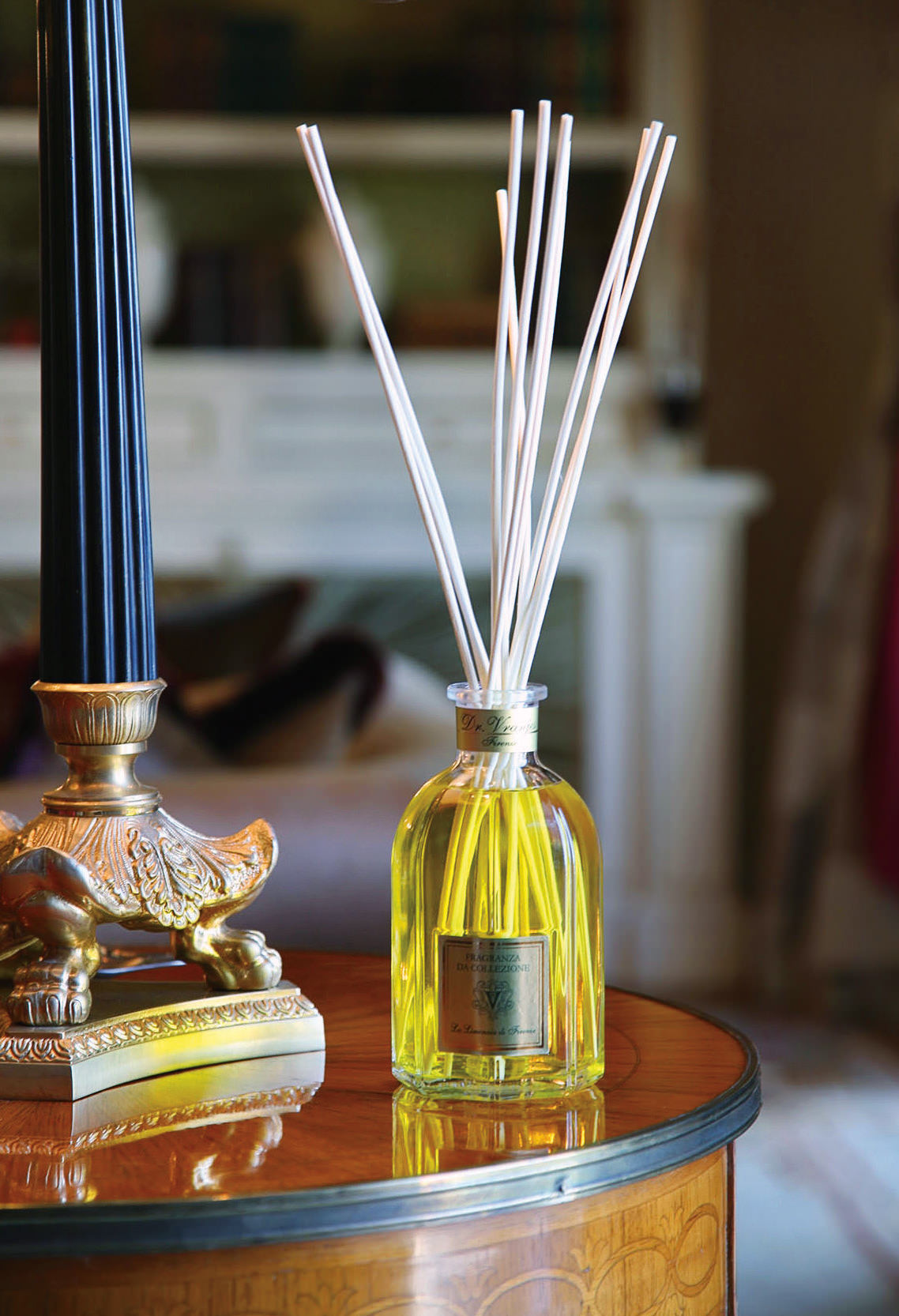-
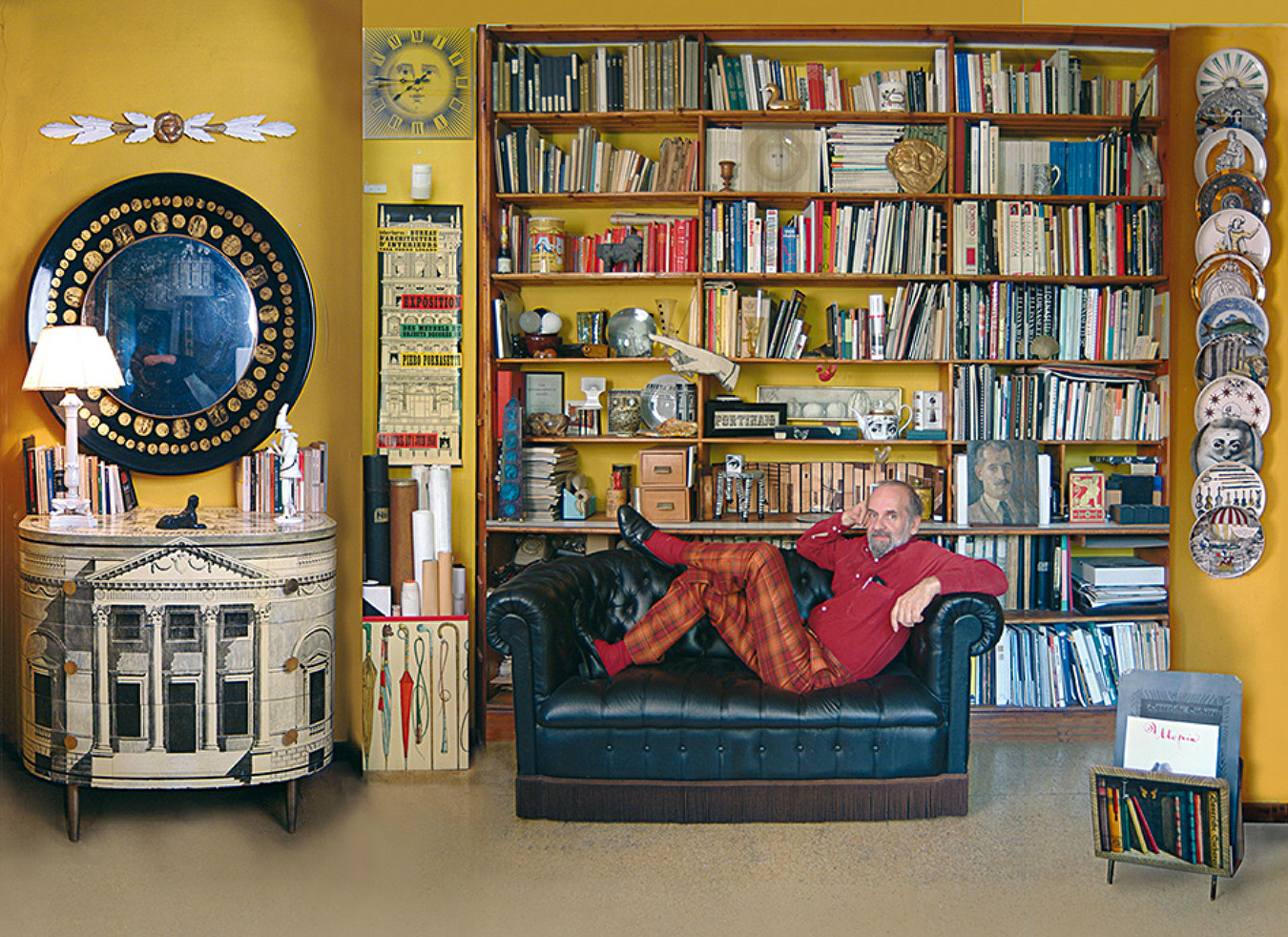
Barnaba Fornasetti in the Fornasetti family home. Photo courtesy of Fornasetti.
-
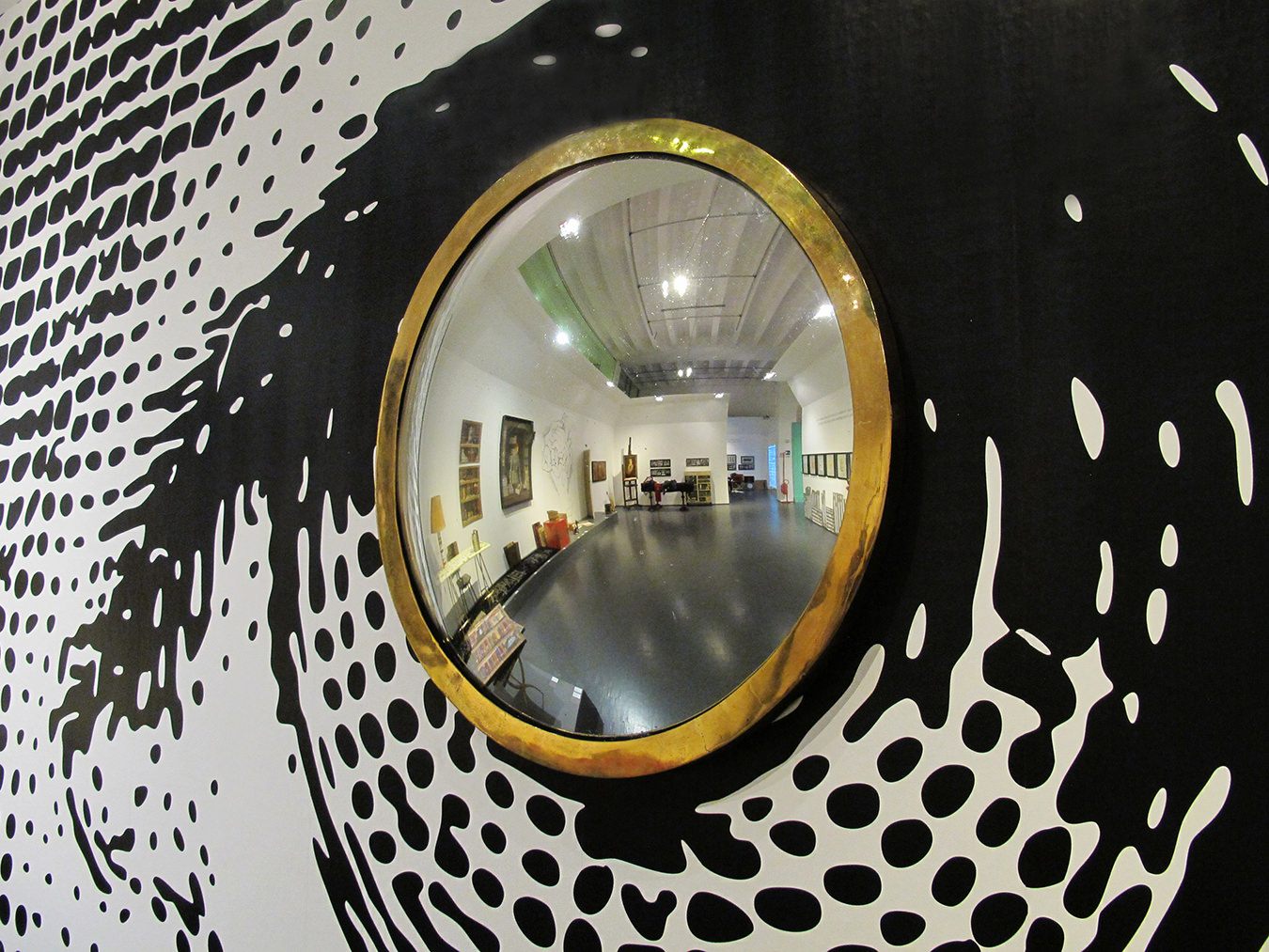
In the 100 Years of Practical Madness exhibition, the opening room displays the first relevant works of Piero’s youth and life, including a large convex mirror. Photo by Marilia Pederbelli, courtesy of the Triennale di Milano museum.
-
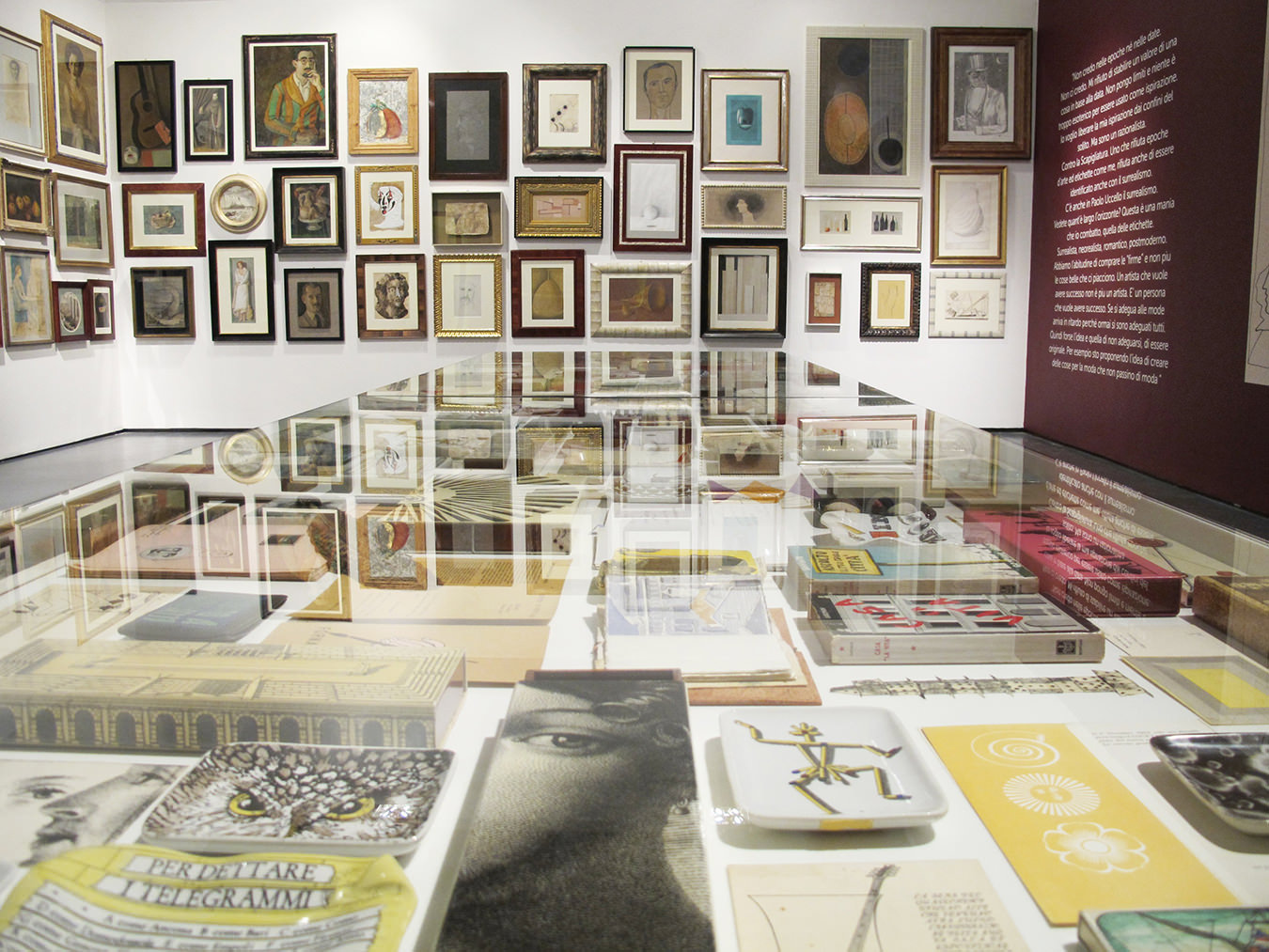
In the third room of the 100 Years of Practical Madness exhibition, several paintings by Piero are displayed. In the middle, a long table showcases boxes, ashtrays, books, postcards, and the like. Photo by Marilia Pederbelli, courtesy of the Triennale di Milano museum.
-
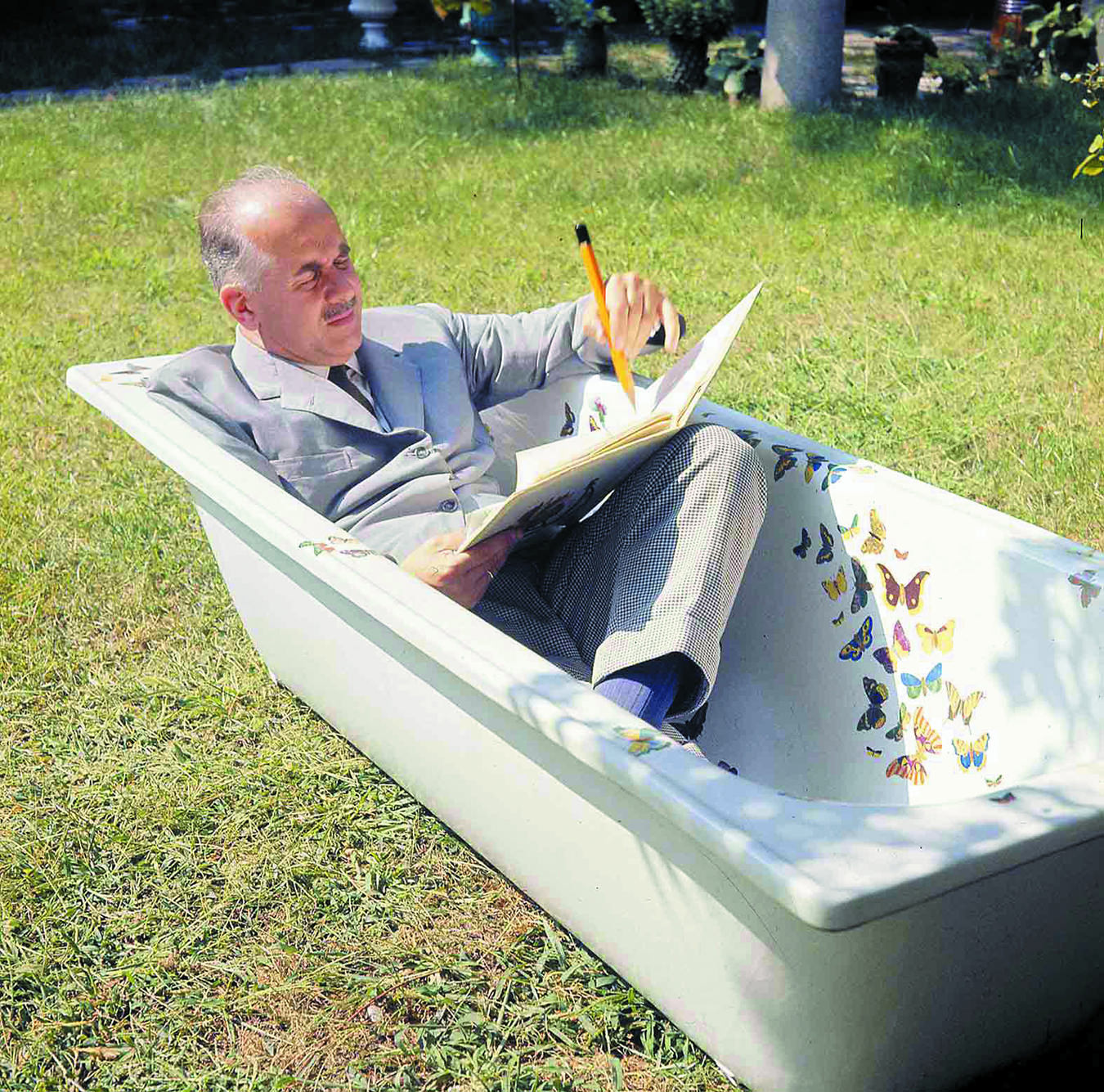
Piero Fornasetti in his Farfalle (Butterflies) bathtub. Image courtesy of Fornasetti.
-
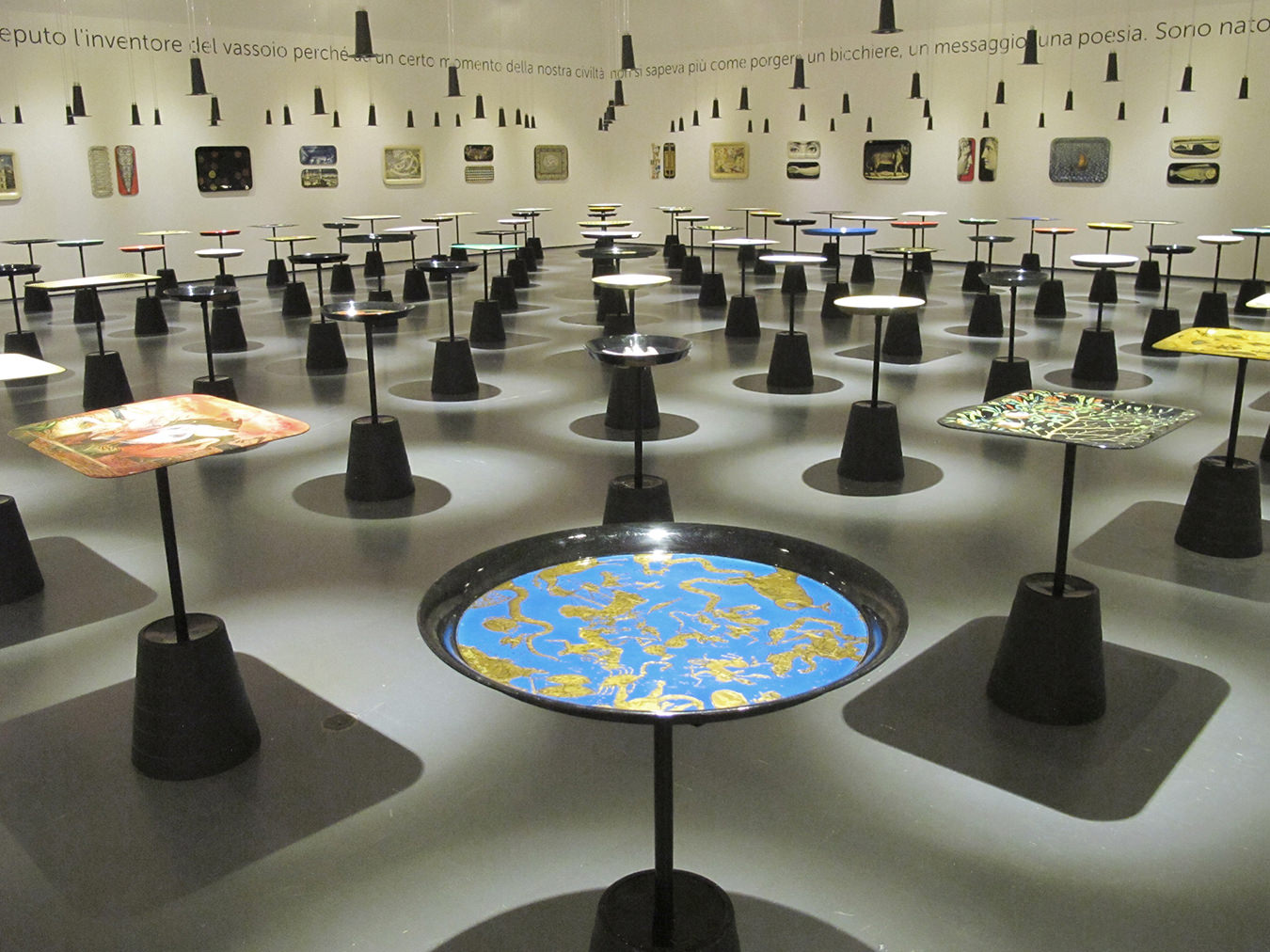
This 100 Years of Practical Madness exhibition room features an installation of approximately 100 trays (on the floor and on the walls). Some of them are still in production. Photo by Marilia Pederbelli, courtesy of the Triennale di Milano museum.
-

The working process of coloring a Farfalle tray. Image courtesy of Fornasetti.
-
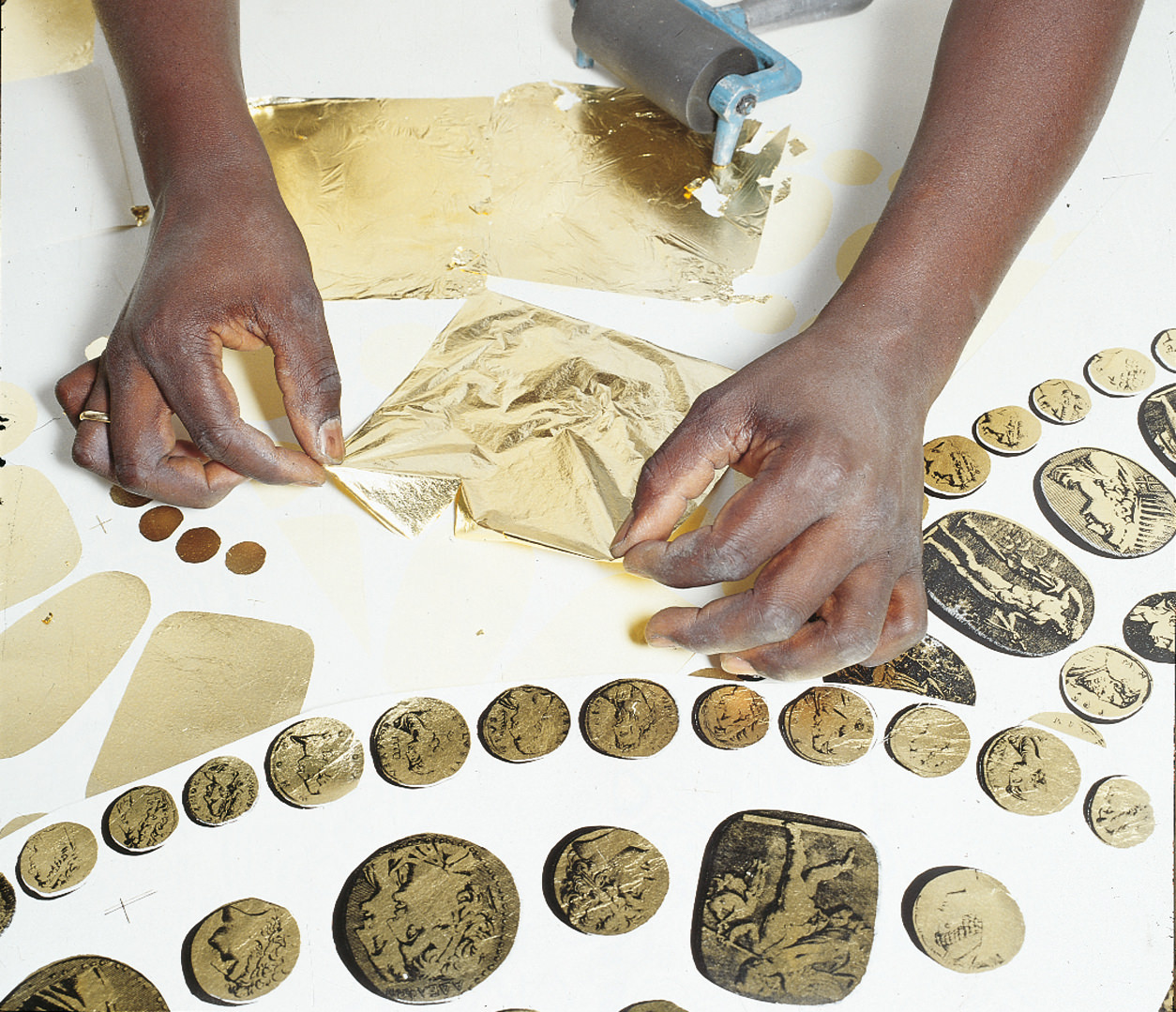
The working process gold leaf application on a table with Cammei (Cameos) decor. Image courtesy of Fornasetti.
-
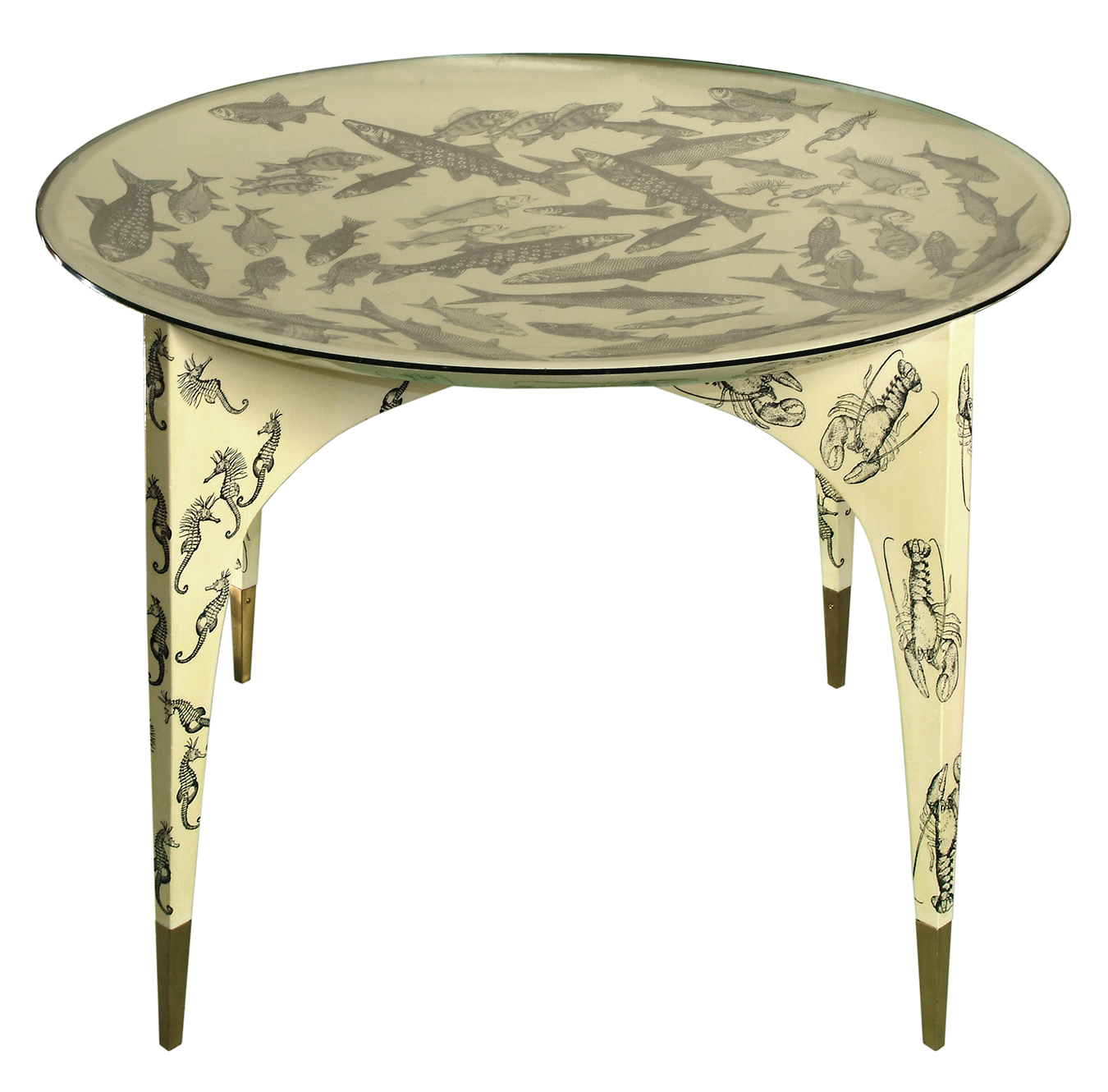
Pesci, cavallucci marini e astici (Fishes, Seahorses and Crayfish), 1950, concave table with glass top. Designed by Gio Ponti and decorated by Piero Fornasetti. Image courtesy of Fornasetti.
-
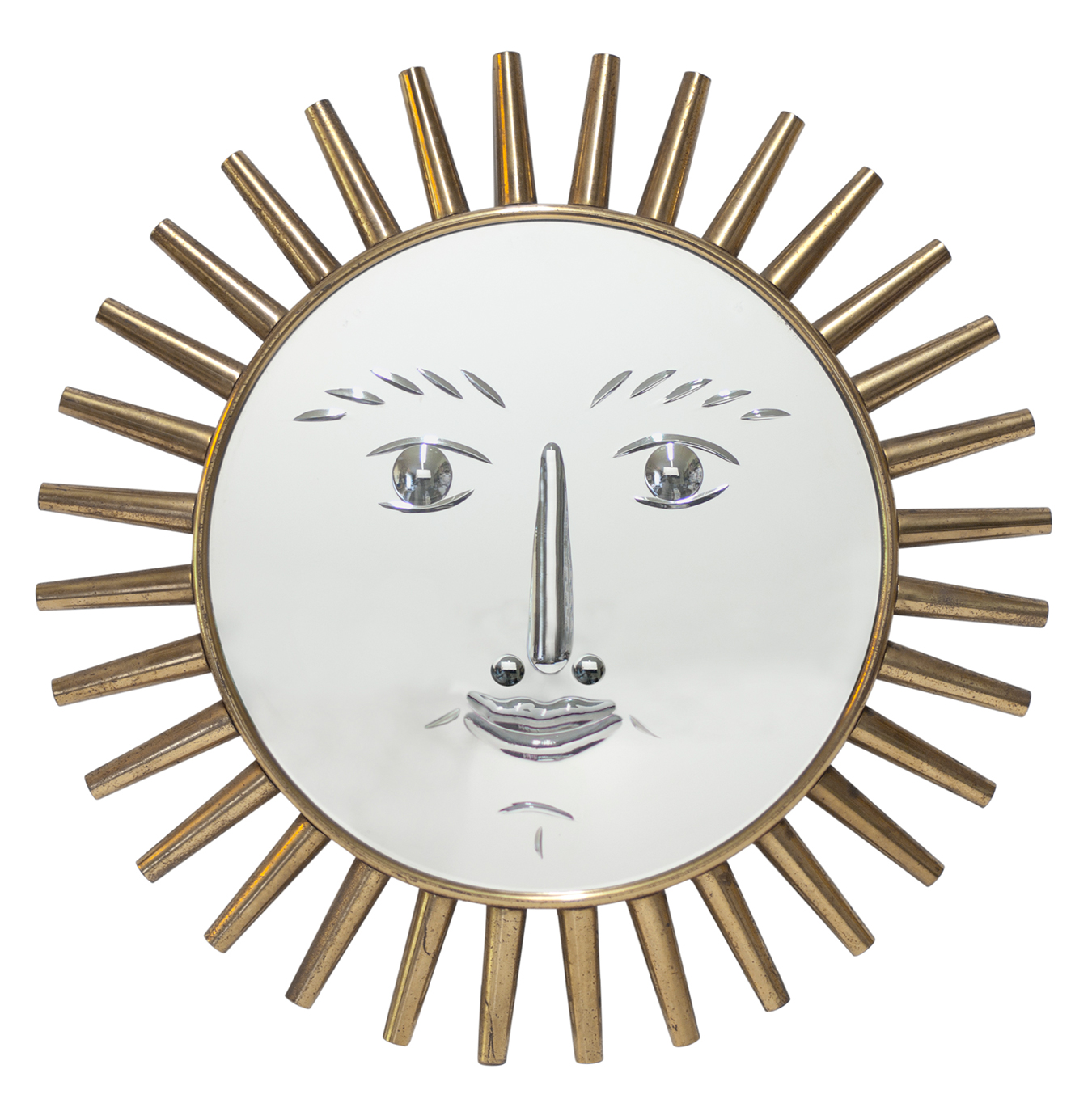
Viso mirror, 1950s and 1960s, brass, by Piero Fornasetti. Image courtesy of Fornasetti.
-

Tema e Variazioni plate, 1960s porcelain, by Piero Fornasetti. Image courtesy of Fornasetti.
-
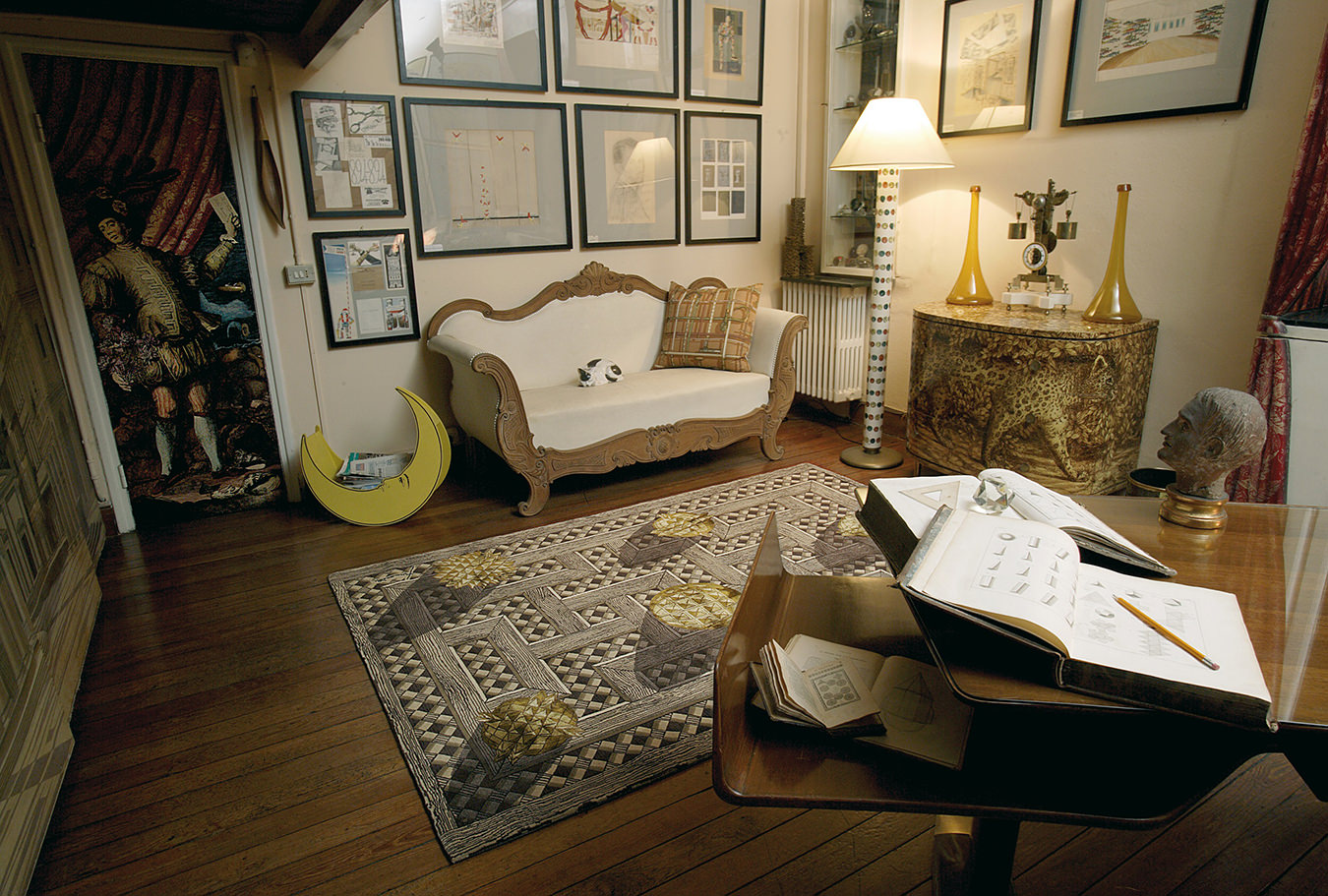
Barnaba Fornasetti’s studio, featuring the Fornasetti Poliedri rug, Leopardo curved chest of drawers, and Paggio painted door. Photo by Hugh Findletar.
-

The living room of the Fornasetti house in Milan, featuring the Fornasetti Pavimento wool rug, knotted by hand by manufacturer Roubini Rugs, and a Fornasetti tray with a Fornasetti Architettura tea set. Photo by Hugh Findletar.
-
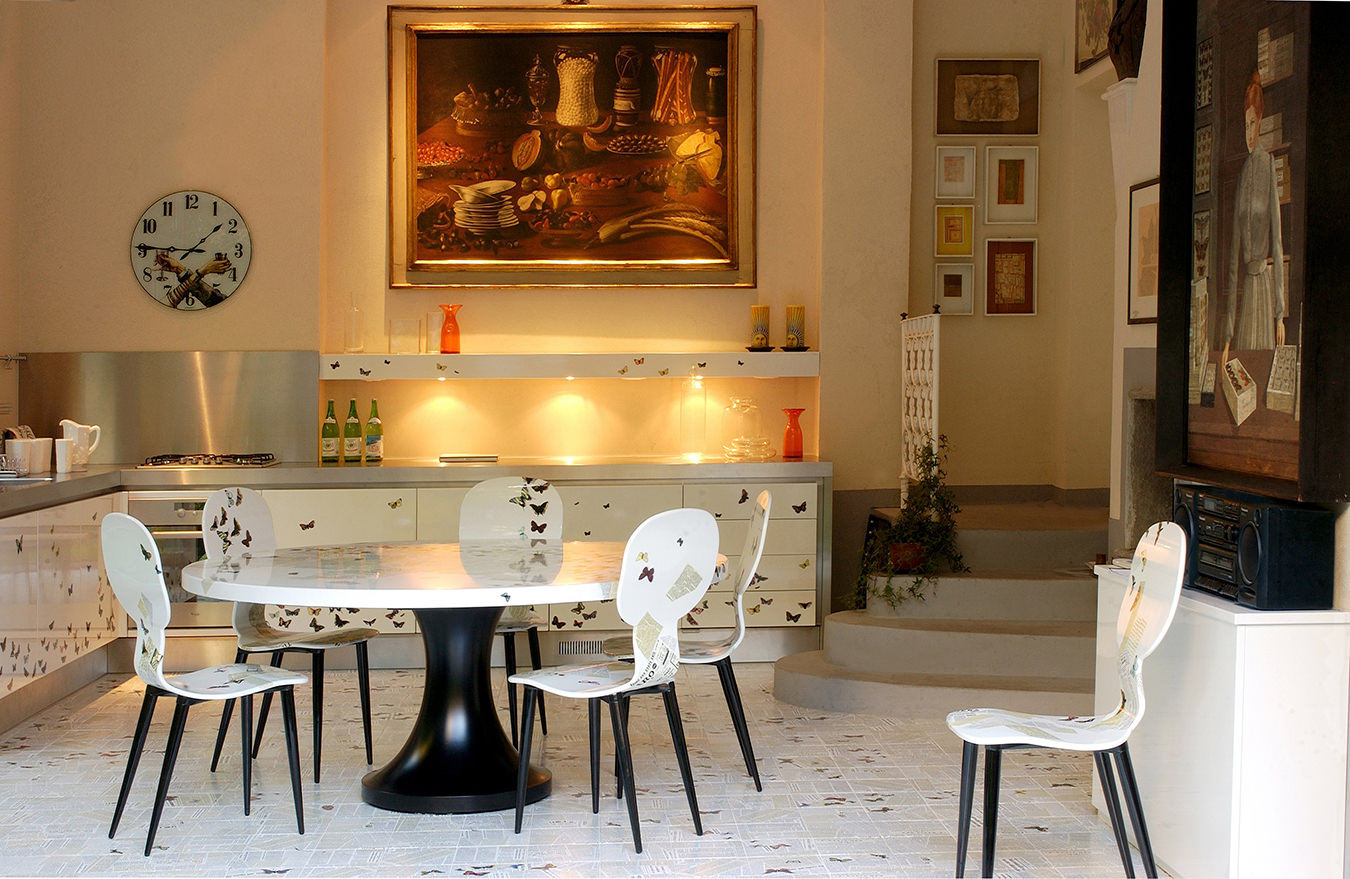
The kitchen of the Fornasetti house in Milan, with Fornasetti Ultime Notizie ceramic tiles, tables, and chairs. Photo by Guy Hervais.
-

A guest room in the Fornasetti house in Milan, with Nuvole (Clouds) wallpaper and Fornasetti Palladiana curved chest of drawers.
Image courtesy of Fornasetti.
Q&A: Barnaba Fornasetti
100 Years of Practical Madness.
Piero Fornasetti was an extraordinary visionary and prolific designer, painter, sculptor, and engraver, creating approximately 13,000 objects and decorations throughout his life. His whimsical motifs—the sun, moon, and stars, animals, surrealist images—adorn furniture, interiors, scarves, and everyday objects like ashtrays, trash cans, and umbrella stands. Piero’s work even caught the attention of legendary designer Gio Ponti, who became a friend and collaborator.
Barnaba Fornasetti, Piero’s son, took over the company in 1988 after his father’s passing and continues Piero’s work today. In celebration of the centenary of his father’s birth, Barnaba has curated more than 1,000 pieces, mostly from the Fornasetti archive in Milan, for an exhibition at the Triennale di Milano museum titled 100 Years of Practical Madness, honouring Piero’s legacy. Barnaba spoke with NUVO about the exhibition, growing up with his father, and our intrinsic need for decoration around us.
NUVO: Please tell us about the exhibition in Milan and your inspiration for curating it.
Barnaba: My idea was to create an exhibition that I like to call a “retroprospective” because it is a retrospective, but at the same time it’s a prospective for what Fornasetti is today and in the future. This exhibition is made for the 100th birthday of my father; my father died in 1988 and it was his idea that I continue his creative labour in some degree.
My father was a prolific artist. You can see in the exhibition how many drawings he was able to do. But he was often able to use images that were already available—images from the past, from stories, from old books, old prints.
You can see in this exhibition pieces made by my father during his life, and also some recent pieces made by me or in collaboration with other designers. The strongest example of this concept is are the plates, the collection called “Theme and Variations”. It is made with the same face, the graphic design of a face taken from an old magazine last century—the portrait of [opera singer] Lina Cavalieri. He did not choose this image because it was Lina Cavalieri, but because it was graphically perfect to create these plates, and he used this image more than 300 times. I continue to make variations of the plates, but not only in a two-dimensional way, I create three-dimensional objects too.
NUVO: What was it like growing up with your father and working with him?
Barnaba: When I was a child, it was normal to live in a place full of imagination, full of images. But growing up, I realized it was actually not so common to live like this. My friends’ homes were very conventional, nothing like mine. It was difficult at the beginning to work with my father when I was a young man, around the 1960s. I suppose that my generation was kind of rebellious. We would fight many times because my father was also rather rebellious. So we had some contrasts, some different ideas. He was a very strong character, very energetic.
After I left home, I demonstrated to my father that I was able to create my own way. When he had some problems with the company economically, after a period that was not so successful for him in the 1970s and beginning of the ’80s, he called me back to help. This, for me, was really a break. I realized this was my path, my interest.
NUVO: Please tell us about your work at the atelier today.
Barnaba: We continue to craft our objects the same way, the traditional way. I also do some “reinventions”, as I call them, using themes from the archives, decorative pieces, expanding on different kinds of objects, different materials, and collaborations with other companies. The atelier is truly the brain of the brand.
NUVO: What’s next for you?
Barnaba: I would like to move away from serial products. What I would like very much is to apply decoration in a different way. For example, I like the idea of putting decoration on the outside of the house, on the façade of buildings. In Milan, you see a lot of different ways to decorate the façade, and I think we are missing this in many places. I would like to collaborate with some artists in this way, to go back to decoration that is festive for everybody.
We are so full of so many products—you can imagine how many chairs we have, design is about creating things that aren’t just simply necessary. Decoration exists more or less everywhere, and we need it, especially today. It’s like music, something that we need for our soul.
100 Years of Practical Madness runs until February 9, 2014 at the Triennale di Milano museum.




